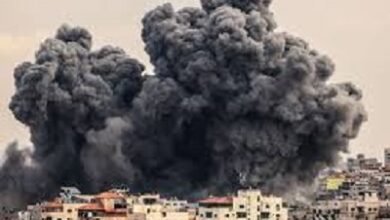Threat of strikes against Israel from Iran or its Axis of Resistance
By S K Singh:Editor-In-Chief

WAR-REPORT : The Pentagon spokesperson reported on August 26 that the United States assesses there is still a threat of strikes against Israel from Iran or its Axis of Resistance based on comments from Iranian leaders and “others.” Iranian Armed Forces General Staff Chief Maj. Gen. Mohammad Bagheri said on August 26 during a ceremony for the new Iranian Minister of Defense Brigadier General Aziz Nasir Zadeh that Iran and the Axis of Resistance will retaliate against Israel “separately and independently.” Bagheri gave this statement at a ceremony that included in its audience a large number of top Iranian commanders who would be responsible for deciding and implementing an Iranian response.
Iranian Foreign Minister Abbas Araghchi restated Iran’s right to respond to the death of Haniyah and warned that Iran’s response will be “definitive, accurate, and calculated” during phone calls with his foreign counterparts on August 23 and 26.

Iran will likely take lessons from Hezbollah’s attack to tailor its retaliatory strike to fulfill Iranian objectives. CTP-ISW argued on August 25 that Iran and its Axis of Resistance could use Hezbollah’s attack in part as a reconnaissance-in-force to increase the efficacy of future attacks on Israel. The US military defines reconnaissance-in-force as “a deliberate combat operation designed to discover or test the enemy’s strength, dispositions, and reactions or to obtain other information.”
CTP-ISW previously noted that Iranian leaders are likely incentivized to slowly assemble a strike package that both hurts Israel and avoids escalation into a wider war. Iran could use Hezbollah’s August 24 strike to identify weaknesses in Israel’s air defenses and monitor Israel’s reaction to understand its redlines and willingness to retaliate.
The IDF assessed that Hezbollah launched less than 50 percent of the number of munitions it intended to launch during its August 24-25 attack on Israel. State-funded, IDF-supported Israeli Army Radio reported on August 26 that the IDF assessed that Hezbollah planned to launch 500 to 600 rockets at northern Israel and “dozens” of drones targeting central Israel in its attack.

Hezbollah fired 200 to 300 projectiles, including approximately 20 one-way attack drones, into Israel during the attack. The IDF added that Hezbollah launched 90 percent of the rockets and drones used in its August 24-25 attack from civilian areas in Lebanon. The IDF intercepted many of the Hezbollah drones before they reached their intended targets.
Some of the drones fell before reaching their target, and none of the drones reached their targets. The IDF assessed that Hezbollah did not try to launch precision missiles during this attack but noted that Hezbollah retains the capability to do so. Israeli Army Radio reported that Hezbollah considered firing precision missiles at the IDF Glilot Base in central Israel but decided against such a strike due to fear of a strong Israeli reaction.
Hezbollah Secretary General Hassan Nasrallah indicated that the August 24-25 attack was satisfactory and said that the response to senior Hezbollah commander Fuad Shukr’s death is “over.”








